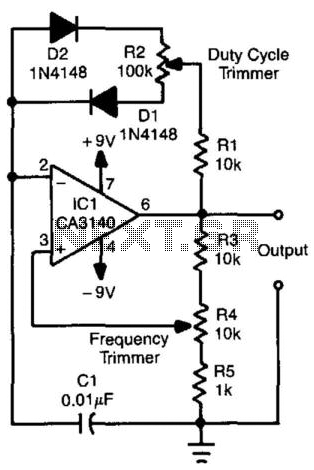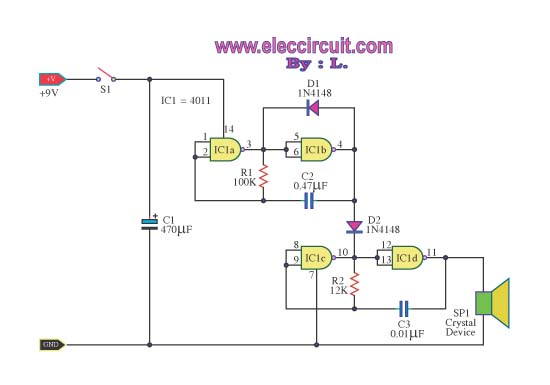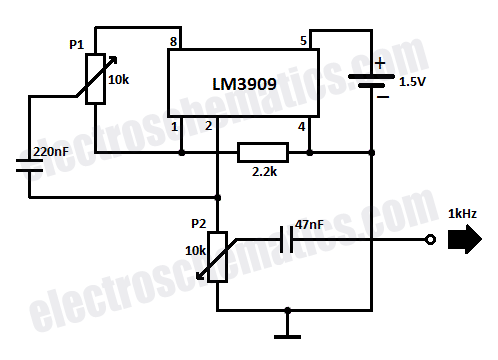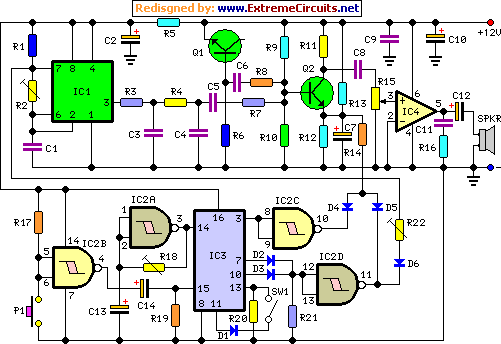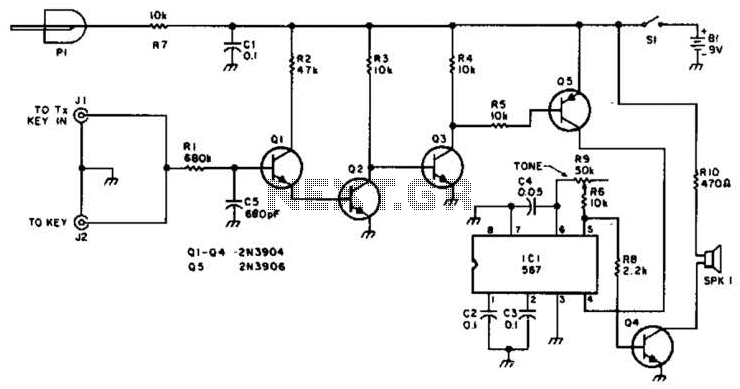
Pink noise generator
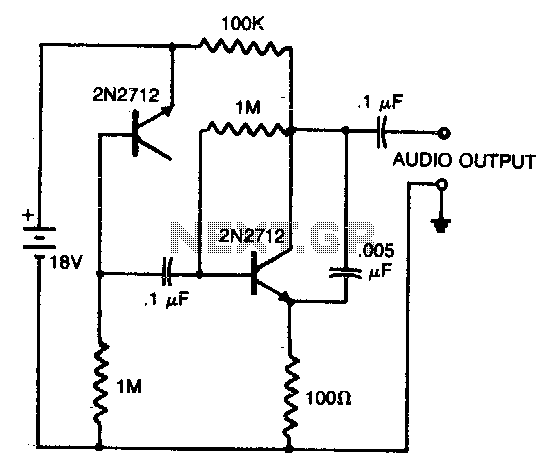
A reverse-biased pn junction of a 2N2712 transistor is utilized as a noise generator. The second 2N2712 functions as an audio amplifier. A 0.005 µF capacitor placed across the amplifier output eliminates certain high-frequency components, allowing for a closer simulation of pink noise. The audio output can be connected to high-impedance earphones or to a driver amplifier for speaker listening.
In this circuit, the first 2N2712 transistor is configured in a reverse-biased manner, which creates a noise source due to the random movement of charge carriers across the pn junction. This noise generation is fundamental in applications requiring random signal generation, such as in testing audio equipment or synthesizing sound.
The second 2N2712 serves as an audio amplifier, amplifying the noise generated by the first transistor to a level suitable for listening. The gain of this amplifier can be adjusted by varying the biasing resistors connected to its base, allowing for flexibility in output levels.
The inclusion of a 0.005 µF capacitor across the output of the amplifier is critical in shaping the frequency response of the circuit. By filtering out high-frequency noise, the capacitor helps to produce a signal that approximates pink noise, characterized by equal energy per octave, which is often used in sound testing and acoustic measurements.
The output of the amplifier can be interfaced with high-impedance earphones, making the circuit suitable for personal listening applications. Alternatively, it can be connected to a driver amplifier, which can drive larger speakers, making this circuit versatile for different audio output scenarios. The design allows for easy integration into various audio systems, providing a compact and effective solution for noise generation and amplification.A reverse-biased pn junction of a 2N2712 transistor is used as a noise generator. The second 2N2712 is an audio amplifier. The 005 µf capacitor across the amplifier output removes some high-frequency components to simulate pink noise more closely The audio output may be connected to high-impedance earphones or to a driver amplifier for speaker listening. 🔗 External reference
In this circuit, the first 2N2712 transistor is configured in a reverse-biased manner, which creates a noise source due to the random movement of charge carriers across the pn junction. This noise generation is fundamental in applications requiring random signal generation, such as in testing audio equipment or synthesizing sound.
The second 2N2712 serves as an audio amplifier, amplifying the noise generated by the first transistor to a level suitable for listening. The gain of this amplifier can be adjusted by varying the biasing resistors connected to its base, allowing for flexibility in output levels.
The inclusion of a 0.005 µF capacitor across the output of the amplifier is critical in shaping the frequency response of the circuit. By filtering out high-frequency noise, the capacitor helps to produce a signal that approximates pink noise, characterized by equal energy per octave, which is often used in sound testing and acoustic measurements.
The output of the amplifier can be interfaced with high-impedance earphones, making the circuit suitable for personal listening applications. Alternatively, it can be connected to a driver amplifier, which can drive larger speakers, making this circuit versatile for different audio output scenarios. The design allows for easy integration into various audio systems, providing a compact and effective solution for noise generation and amplification.A reverse-biased pn junction of a 2N2712 transistor is used as a noise generator. The second 2N2712 is an audio amplifier. The 005 µf capacitor across the amplifier output removes some high-frequency components to simulate pink noise more closely The audio output may be connected to high-impedance earphones or to a driver amplifier for speaker listening. 🔗 External reference
